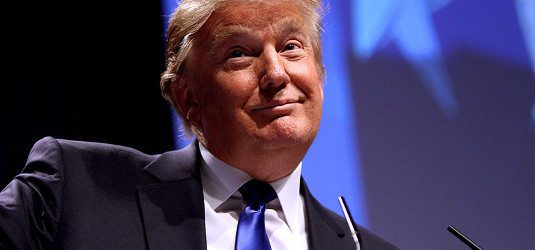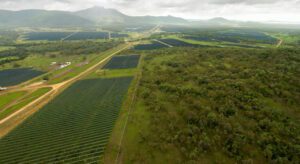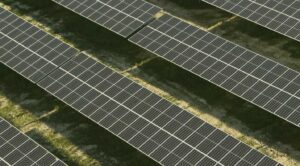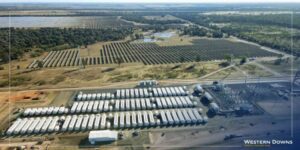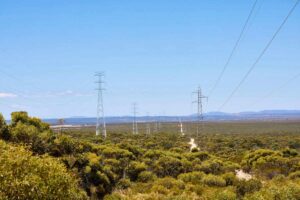PV Magazine presents a news analysis of the role solar energy played in the first presidential debate.

If you blinked, you might have missed it — but one sharp exchange between Secretary of State Hillary Clinton and Republican presidential candidate Donald Trump revealed the sharp policy differences between the two when it comes to the future of solar energy.
It didn’t take long for solar energy to come up. In answer to moderator Lester Holt’s question, “Why are you a better choice than your opponent to create the kinds of jobs that will put more money into the pockets of American works?” Clinton mentioned solar energy as part of her jobs plan.
“Donald thinks that climate change is a hoax perpetrated by the Chinese,” Clinton said. “I think it’s real….And I think it’s important that we grip this and deal with it, both at home and abroad. And here’s what we can do. We can deploy a half a billion more solar panels. We can have enough clean energy to power every home. We can build a new modern electric grid. That’s a lot of jobs; that’s a lot of new economic activity.”
After interrupting Clinton twice to insist he did not say global warming was a Chinese-created hoax (though a 2012 tweet contradicts that statement. PolitiFact notes that Trump later said the tweet was a joke.), Trump responded by highlighting a failed government investment in a solar company as a reason to dismiss solar energy’s viability.
“[Clinton] talks about solar panels,” Trump says. “We invested in a solar company, our country. That was a disaster. They lost plenty of money on that one.
“Now, look, I’m a great believer in all forms of energy, but we’re putting a lot of people out of work,” Trump continued. “Our energy policies are a disaster. Our country is losing so much in terms of energy, in terms of paying off our debt. You can’t do what you’re looking to do with $20 trillion in debt.”
Though Trump did not name the solar company in question, the post-debate consensus was that he was referring to the Solyndra “scandal,” which occurred in 2011.
Let’s start with Clinton’s plan
Most analysts agree that installing half a billion solar panels, increasing U.S. installations 700 percent, is ambitious but doable under the right circumstances. Her plan, first discussed in July 2015, pledges to have the panels installed by 2021 — or as she has put it, by the end of her first term.
What’s even more important about Clinton’s plan, however, is how she’s framing the debate. Rather than focus on the environmental and energy-security benefits of solar (both of which are mentioned in her actual plan), she frames the solar industry as a job creator — and the facts back up her contention that solar creates high-paying jobs that can’t be outsourced overseas.
The Solar Foundation reported in 2015 that its annual solar job census found “that the [solar] industry continues to exceed growth expectations, adding workers at a rate nearly 12 times faster than the overall economy and accounting for 1.2% of all jobs created in the [United States] over the past year. [Its] long-term research shows that solar industry employment has grown by 123 percent in the past six years, resulting in nearly 115,000 domestic living-wage jobs.” In 2016, the number of jobs in the industry have continued to grow and surpassed the number of workers in the oil drilling industry for the first time.
Clinton has a detailed plan for achieving her goals, including fighting Congress’ attempts to roll back the Clean Power Plan that President Barack Obama has proposed, as well as creating a Clean Energy Challenge to spur aggressive research-and-development efforts to add, in her words, “more power generation capacity to the grid than during any decade in American history, from a combination of wind, solar, hydro, geothermal, and other forms of renewable electricity.”
In contrast, Trump supports an all-of-the-above energy strategy, including shale oil, “clean” coal and natural gas, according to his campaign website. There is not a single mention of solar — or any renewable energy source, for that matter —in his energy plan. In fact, Trump recently said that “solar is not working so good” and that “wind power kills all your birds”.
And Trump’s top energy-policy advisors include a North Dakota congressman who is a climate change skeptic and is rumored to be considering nominating the leader of a fracking company as Secretary of Energy. On his website, Trump also includes a pledge to “open onshore and offshore leasing on federal lands, eliminate moratorium on coal leasing, and open shale energy deposits.”
And Trump’s reference to Solyndra? We’ll let Fortune magazine take this one:
“That Solyndra is still being brought up as an example of a failed energy policy is surprising. The company was founded in 2005, and went bankrupt six years later in 2011. Meanwhile, solar companies in the U.S. have been installing record numbers of solar energy in both large power plants and on building rooftops.
[I]n recent years, the Department of Energy has released figures showing how the loan program, which funded Solyndra, has created thousands of jobs. U.S. tax payers have actually made a profit on the program because the vast majority of the other loans went to successful projects and companies.
In addition, solar is now going gangbusters in the U.S.”
Here’s hoping that the candidates get a further chance to explain their respective energy plans beyond the brief mentions they received last night. After all, it should ultimately to the American people to decide what kind of energy they want to power the United States in the future.
Source: PV f. Reproduced with permission.
Share this:
- Click to share on Facebook (Opens in new window) Facebook
- Click to share on X (Opens in new window) X
- Click to share on LinkedIn (Opens in new window) LinkedIn
- Click to share on Reddit (Opens in new window) Reddit
- Click to email a link to a friend (Opens in new window) Email
- Click to print (Opens in new window) Print

